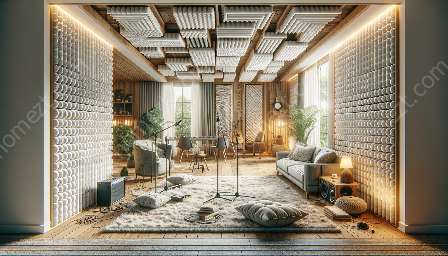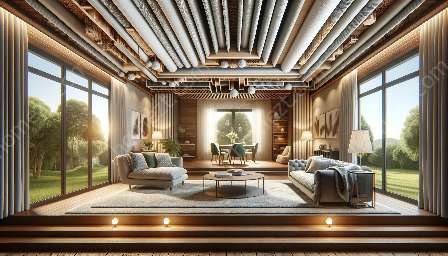When it comes to soundproofing walls and ceilings in homes, it's essential to adhere to legal and building codes. Understanding these regulations ensures a peaceful and harmonious living environment while meeting the necessary standards for construction and renovation.
Understanding Legal and Building Codes for Residential Soundproofing
Residential soundproofing is subject to various legal and building codes that aim to minimize noise transfer between dwellings and ensure a comfortable living space for occupants. These codes not only promote tranquility within homes but also serve as vital guidelines for architects, builders, and renovators.
Meeting Legal Requirements
Legal requirements for soundproofing in residential properties typically stem from local ordinances and building regulations. These regulations specify acceptable noise levels, sound transmission class (STC) ratings, and impact insulation class (IIC) ratings for walls and ceilings. Compliance with these standards is essential to obtain permits for construction, renovation, or conversion of residential properties.
Embracing Building Codes
Building codes for residential soundproofing dictate the materials, techniques, and design principles that must be employed to achieve adequate noise control within homes. These codes cover aspects such as acoustic insulation, structural integrity, and the installation of sound-dampening materials. Compliance with building codes is crucial for ensuring that newly constructed or renovated homes meet the required standards for soundproofing.
Soundproofing Walls and Ceilings in Homes
When soundproofing walls and ceilings in homes, it's important to consider both the legal and building code requirements. This involves using appropriate materials and construction techniques to minimize airborne and impact noise transmission between different rooms and living units.
Material Selection and Installation
Legal and building codes often specify the use of sound-absorbing or sound-dampening materials such as acoustic insulation, resilient channels, and double drywall layers. These materials are designed to reduce the transmission of sound waves through walls and ceilings, thereby enhancing the overall acoustic performance of homes. Compliance with these requirements ensures that the soundproofing measures are effective and meet the necessary standards.
Construction Techniques
The construction techniques for soundproofing walls and ceilings must align with the prescribed building codes. This may involve proper installation of insulation, sealing of gaps and cracks, and avoiding direct structural connections that can facilitate noise transfer. Adhering to these techniques not only supports legal compliance but also contributes to the creation of a peaceful and comfortable living environment.
Noise Control in Homes
Effective noise control in homes goes beyond meeting legal and building code requirements. It encompasses a holistic approach to minimizing disruptive sounds and creating a serene living environment for occupants. By integrating soundproofing measures and conscious design choices, homeowners can enhance the acoustic comfort of their properties.
Enhancing Acoustic Comfort
Embracing noise control in homes involves the strategic placement of sound-absorbing materials, minimizing hard surfaces that reflect sound, and incorporating acoustic design elements into the interior spaces. These efforts, in addition to meeting legal and building code requirements, can significantly improve the overall acoustic comfort within residential properties.
Integration with Building Design
Considering noise control in the initial design and construction phases of residential properties is paramount. By factoring in soundproofing solutions and noise-reducing features from the outset, builders and architects can create homes that not only meet legal standards but also offer exceptional acoustic quality for occupants.






